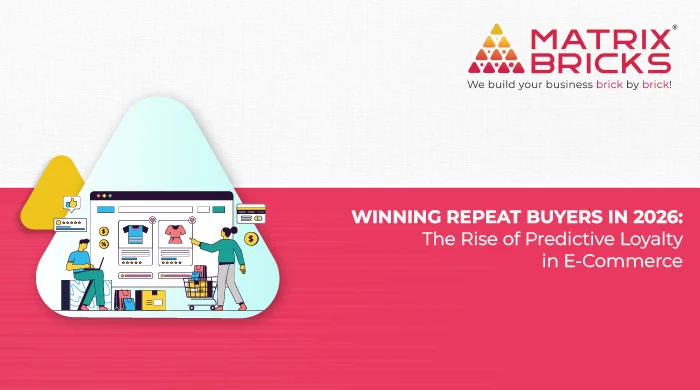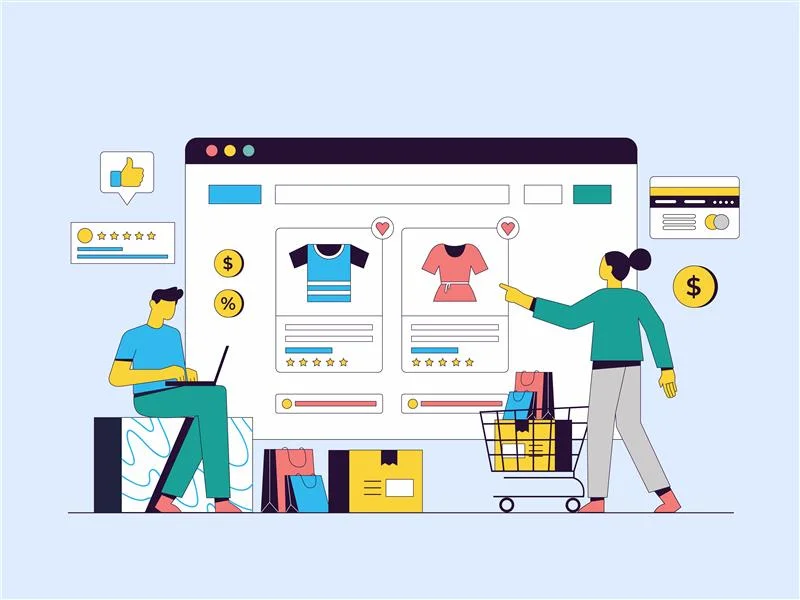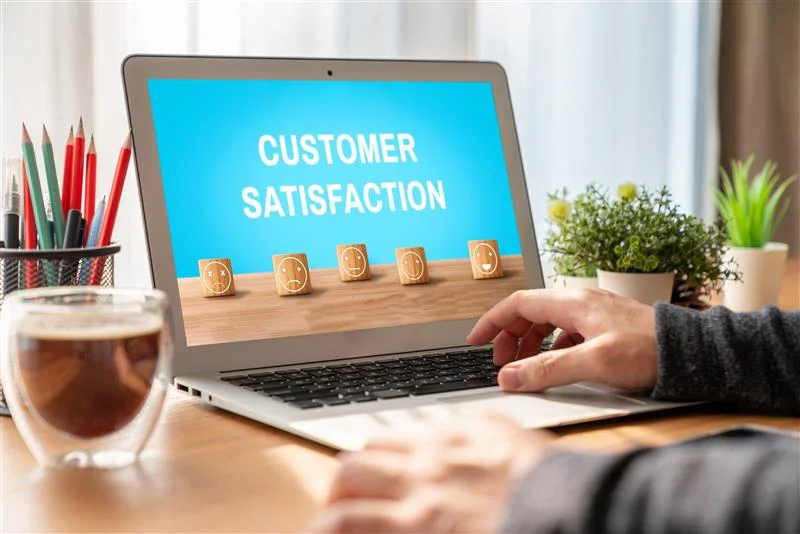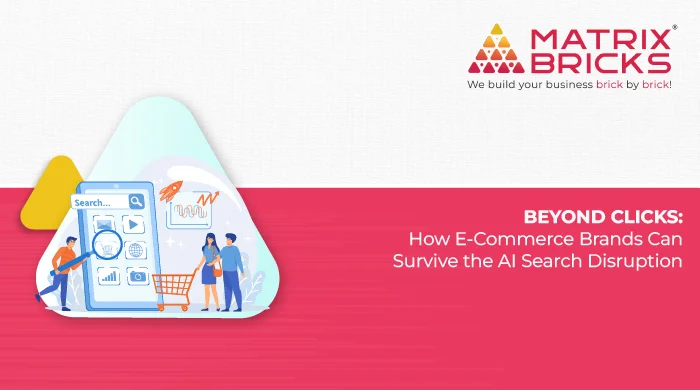
In 2026, the landscape of online shopping will be more competitive than ever. With thousands of options just a click away, consumers are growing fatigued by choice. The brands that will thrive are those that prioritise customer retention over mere acquisition. Today’s shoppers expect more than just good products; they want personalised, value-driven experiences that feel tailored just for them. This is where e-commerce personalisation and predictive analytics come into play, allowing businesses to anticipate customer needs and craft loyalty strategies that stick.
With the rise of predictive loyalty in e-commerce, brands have a golden opportunity to transform one-time buyers into repeat customers. Let’s explore how companies can capitalise on this trend and why loyalty marketing will be the cornerstone of success in 2026.

Why Retention Beats Acquisition in 2026
For years, e-commerce businesses have focused heavily on attracting new customers. However, acquiring a new customer can cost five times as much as retaining an existing one. In 2026, customer retention will be a defining factor for sustainable growth. Here’s why:
- Cost efficiency: Marketing budgets go further when focused on retaining loyal customers rather than constantly chasing new ones.
- Stronger brand advocacy: Happy repeat buyers often act as organic promoters, sharing their experiences with friends and family.
- Higher lifetime value: Returning customers tend to spend more over time, increasing revenue without additional acquisition costs.
Consumers are now more thoughtful and more selective. Simply offering discounts is no longer enough. They expect loyal marketing that demonstrates an understanding of their preferences and values. Businesses that embrace e-commerce personalisation, tailoring offers, recommendations, and communications to individual behaviours, are more likely to secure long-term loyalty.
Even small gestures, such as sending personalised product suggestions or early access to new items, can significantly boost retention. In 2026, customer expectations have shifted: value-driven interactions and relevant experiences will win over generic mass marketing.
Building Predictive Loyalty Models Using AI
To win repeat buyers in 2026, you need more than generic email blasts and loyalty points. You need predictive loyalty—where AI-powered models anticipate what your customer will do next, and you act ahead. Here’s how to build those models and optimise retention and loyalty.
Step 1: Gather the correct data
- Purchase history: What have they bought, when, how much, how often.
- Browsing behaviour: Products viewed, time spent, pages abandoned.
- Engagement data: Email opens, click-throughs, loyalty programme interactions.
- Customer Profile: Demographics, Location, Preferences, and Feedback.
- External signals: Seasonality, market trends, competitor activity.
Step 2: Clean and segment
- Remove duplicates, fix missing values, standardise formats.
- Create exploration segments: high-value repeaters, one-timers, churn-risk, and new prospects.
- Using predictive analytics, highlight patterns in the segments: e.g., customers who browse twice a week but haven’t bought in a month may be high risk.
Step 3: Build a predictive loyalty model
- Use machine-learning techniques (e.g., logistic regression, random forest, gradient boosting) to predict outcomes like: – Which customers will make a repeat purchase in the next 30 days? – Which customers are likely to churn?
- Variables: time since last purchase, average order value, browsing frequency, engagement score, loyalty programme status.
- Output: A score for each customer indicating the likelihood of repeat purchase or churn.
Step 4: Act on insights with loyalty marketing
- For high-likelihood customers: send personalised product recommendations, early-access offers, VIP experiences.
- For at-risk customers: trigger win-back campaigns, incentivise with tailored offers, and ask for feedback.
- For new or low-engagement customers: offer onboarding guidance, highlight value propositions, and introduce loyalty benefits.
- Utilise e-commerce personalisation: dynamic content, customised product flows, individual offers.
Step 5: Continuously refine the model
- Track the actual outcome vs. the predicted outcome, measure model accuracy.
- Update variables and retrain the model: e-commerce and customer behaviour change fast.
- Integrate new data sources (e.g., social media engagement, mobile app behaviour) to enhance predictions.
Why this works
- Over time, your brand shifts from reactive retention to proactive loyalty marketing.
- When you know who is likely to buy again, you can focus your resources on those segments and deliver e-commerce personalisation at scale.
- By leveraging predictive analytics, you can anticipate customer needs rather than only respond after they act.
Integrating Omnichannel Personalisation
In 2026, customers expect seamless experiences across channels—whether they’re browsing on mobile, clicking through email, or standing in a physical store. That’s where omnichannel personalisation comes in, enabling brands to deliver tailored journeys across touchpoints and strengthen customer retention and loyalty marketing.
Key components of successful omnichannel personalisation
Unified customer view
- Create a single customer profile that aggregates behaviour and transactions across channels (web, app, email, in-store).
- Ensure data flows freely between systems (CRM, commerce platform, email service provider).
- With a unified view, you’ll know if a customer browsed on mobile, added to cart, but left and then visited your website on desktop.
Personalised content and offers
- Show customer-specific product recommendations on mobile app, website, email and even SMS.
- Use data from the predictive loyalty model to trigger targeted offers. For example, a high-value customer might receive an exclusive invitation, while a customer who hasn’t purchased in three months might receive a personalised discount.
- Tailor communication tone, timing and channel to the customer’s preference and behaviour.
Channel coordination and timing
- If a customer adds items to the cart on mobile and doesn’t purchase, send a follow-up email or app notification with a personalised reminder.
- When a customer visits your store in person and interacts with your app, offer a digital loyalty reward redeemable in-store.
- Ensure the experience is frictionless: e-commerce personalisation isn’t just about showing different content—it’s about making each interaction relevant and smooth.
Feedback loops and adaptation
- Capture reactions: Did the customer click the recommendation? Did they redeem the offer? Did they return?
- Feed this data back into your predictive analytics and personalisation engine so that each next touch is more thoughtful.
- Over time, your loyalty marketing becomes more effective because every channel interaction is informed by past behaviour.
Example scenario
Imagine Jane browses your online store via the app for athletic shoes—she clicks on a pair of running trainers but leaves without making a purchase. Your unified system is aware of this and logs the behaviour. Two days later, she’s browsing your website on a desktop and receives a personalised email: “Hi Jane, spotted something you liked: here’s 10% off those running trainers for you today only.” She clicks, buys. Later, when she visits your physical store, the app nudges her: “Your loyalty reward is ready—10 points wait for you at checkout.” This is how e-commerce personalisation, combined with omnichannel strategy and predictive insight, drives customer retention and builds loyalty marketing that resonates.

Measuring Lifetime Value Beyond Transactions
Traditionally, brands measured success simply by counting transactions or order volume. But in 2026, the focus is shifting to measuring lifetime value (LTV) in a richer way, because if you want sustainable repeat buyers, you need to understand and quantify value beyond the purchase.
Key metrics for enhanced lifetime value measurement
| Metric | Why it matters |
| Repeat purchase rate | Indicates how often customers return — a core measure of customer retention. |
| Time between purchases | Shorter intervals suggest stronger engagement and loyalty. |
| Average order value (AOV) growth | If AOV increases over time, loyalty efforts are paying off. |
| Customer referral rate | Loyal customers often bring new ones, amplifying value beyond just themselves. |
| Engagement depth (e.g., email opens, app sessions) | Engagement often precedes purchase; high engagement = higher retention potential. |
| Churn rate or inactivity period | Identifies customers slipping away, enabling targeted loyalty marketing interventions. |
| Brand advocacy and sentiment | Positive experience leads to word-of-mouth, social shares, and higher value over time. |
Using these metrics, along with your predictive loyalty scores, provides a holistic view of value. Rather than just seeing a one-time purchase, you know each customer as a path of possibility.
Why is this approach important
- By measuring beyond transactions, you can identify high-potential customers earlier and focus your resources accordingly.
- You’ll see patterns: maybe high-engagement customers buy more frequently, or reward-programme members refer others. These insights fuel more innovative e-commerce personalisation and predictive analytics.
- When you understand what drives lifetime value, you can invest in retention and loyalty programmes with confidence, rather than guesswork.
Bringing it all together
- Use your predictive model to flag customers likely to return or churn.
- Apply omnichannel personalisation to engage them—whether high potential or at risk.
- Measure using the richer set of LTV metrics to see what’s working: repeat rate, AOV growth, referral, and engagement depth.
- Adjust your loyalty marketing strategy based on insights—amplify what works, cut what doesn’t.
- Over time, your brand shifts from chasing the next click to building relationships. That is the essence of winning repeat buyers.
Why this matters for your Brand in 2026
In an era where options are abundant and attention spans are short, delivering relevant experiences is non-negotiable. By aligning e-commerce personalisation, predictive analysis, customer retention, and loyalty marketing, you create a virtuous loop:
- Predictive models identify who is likely to make a purchase again and who requires a nudge.
- Personalisation across channels turns insights into action.
- Retention-driven loyalty marketing deepens relationships and reduces churn.
- Measuring lifetime value beyond simple transactions provides strategic clarity.
And that loop keeps repeating, so you are not winning repeat buyers today but steadily building a base of loyal customers who return, spend more, refer others and support your brand long term.
Frequently Asked Questions
1. What exactly is predictive loyalty?
Predictive loyalty is the use of predictive analytics to forecast which customers are likely to be loyal, which are at risk of churn, and what actions will motivate them to remain faithful. It goes beyond traditional loyalty programmes by using data to personalise offers and experiences proactively.
2. How is e-commerce personalisation different from general marketing?
E-commerce personalisation means customising the shopping experience, product recommendations, content, and offers to the individual customer’s behaviour, preferences, and history. It’s more specific and dynamic than broad marketing, which often uses one-size-fits-all approaches.
3. How can I measure the success of my loyalty marketing efforts?
Beyond sales and numbers, measure metrics like repeat purchase rate, time between purchases, AOV growth, referral rate, engagement depth, and churn/inactivity periods. These give you a richer picture of customer lifetime value.
4. Do I need expensive AI tools to implement predictive analysis?
While advanced AI tools are helpful, you can start with simpler models and resources: segment your data, apply basic regression or decision-tree techniques, and gradually move to more sophisticated algorithms. The key is to build a data-driven mindset and system.
5. How do I integrate omnichannel personalisation when I have a limited budget?
Focus on the most impactful channels first—your website/app plus email. Create a unified customer view (even with basic data), personalise content/offers using your predictive model, and then gradually add channels like SMS, push notifications, or in-store experience as you grow.
If you’re ready to take your retention strategy to the next level and win repeat buyers consistently, request a demo of our retention strategy toolkit for e-commerce brands by Matrix Bricks.




